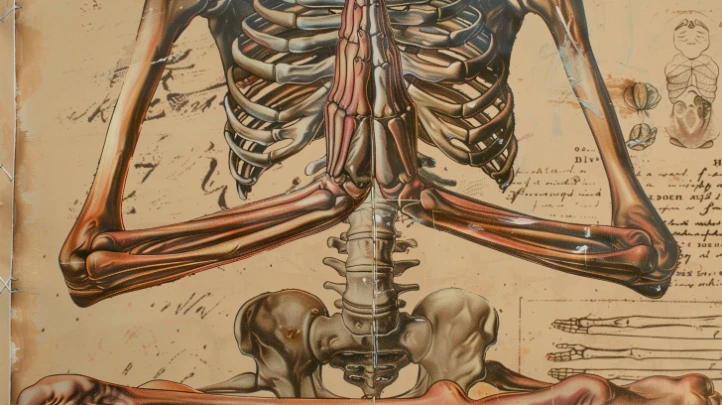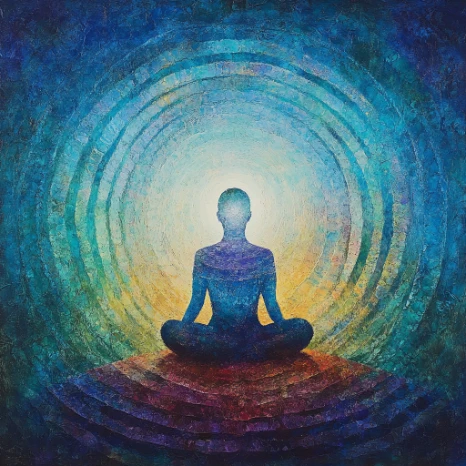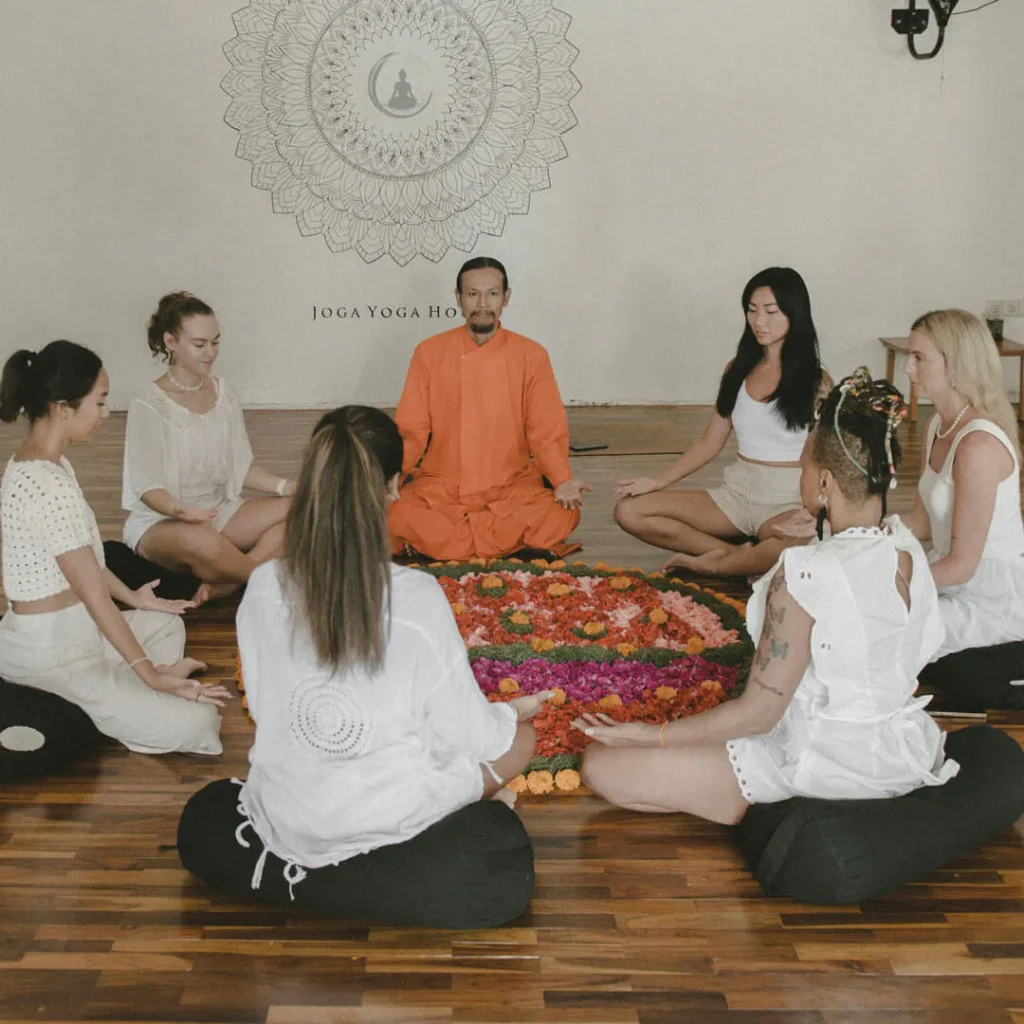What are Trigunas? In ancient Indian philosophy, the Trigunas, also known as the three gunas, represent fundamental qualities that shape human nature and the universe itself. These qualities, Sattva, Rajas, and Tamas, are believed to be inherent in all beings and influence everything from our thoughts and actions to our physical and mental well-being.
Originating in Sanskrit literature, the Trigunas provide a framework for understanding the complexities of human experience, offering insights into the motivations behind our choices, the nature of our desires, and the path towards liberation.
The Trigunas are not merely abstract concepts but are deeply intertwined with the fabric of existence. They are believed to be the driving forces behind the cycle of birth, death, and rebirth, and play a significant role in the concepts of karma and liberation.
Understanding the Trigunas can empower us to navigate life’s challenges, cultivate positive qualities, and ultimately achieve a state of balance and harmony.
Introduction to the Trigunas: What Are Trigunas

The Trigunas, a fundamental concept in ancient Indian philosophy, offer a framework for understanding the complexities of human nature. They represent three fundamental qualities or forces that influence our thoughts, emotions, and actions, shaping our individual personalities and experiences.
The three gunas, sattva, rajas, and tamas, are fundamental qualities in yogic philosophy that influence our mental and physical states. Understanding these gunas can help us navigate our own energy and cultivate balance. A pose like the yoga pose fold back over bended knee , also known as Janu Sirsasana, can be particularly effective in calming the mind and promoting sattva, the guna associated with purity, clarity, and harmony.
By exploring the relationship between yoga poses and the gunas, we can better understand how to utilize these qualities for personal growth and well-being.
Origins of the Trigunas in Sanskrit Literature
The concept of the Trigunas originates from the ancient Sanskrit text, the Bhagavad Gita, a part of the Hindu epic Mahabharata. In this text, Lord Krishna, the divine charioteer of Arjuna, explains the nature of the Trigunas to his disciple, Arjuna, during a pivotal moment in the epic battle.
The trigunas, or three qualities of nature, are known as sattva, rajas, and tamas. Each of these qualities is associated with a different kind of energy and can manifest in our physical and mental state.
The Bhagavad Gita, a profound treatise on spirituality and ethics, explores the role of the Trigunas in shaping human consciousness and actions.
In yogic philosophy, the trigunas, or three qualities, represent the fundamental forces that shape our experiences. These qualities, sattva (purity), rajas (passion), and tamas (inertia), are constantly interacting, creating a dynamic balance within us.
By understanding the trigunas, we can better navigate the fluctuations of our minds and bodies, fostering a more harmonious existence.
Bhagavad Gita 14
The trigunas, or three qualities, are fundamental concepts in yogic philosophy. They are sattva (purity), rajas (passion), and tamas (inertia), and they influence our thoughts, emotions, and actions. Yoga, as explained in how yoga works , aims to cultivate sattva while minimizing rajas and tamas, leading to a balanced and harmonious state of being.
Understanding the trigunas is essential for navigating the ups and downs of life and achieving a sense of inner peace.
Significance of the Trigunas in Understanding Human Nature
The Trigunas are not static, but rather a dynamic interplay of forces that influence our perception, motivation, and behavior. By understanding the interplay of these qualities, we can gain insights into our own nature and the motivations behind our actions.
- Sattva: Sattva, the quality of purity, goodness, and enlightenment, is associated with qualities like clarity, peace, compassion, and knowledge. Individuals with a predominance of sattva tend to be calm, balanced and focused. They are often drawn to spiritual pursuits and strive for harmony in their lives.
- Rajas: Rajas, the quality of passion, activity, and ambition, is associated with qualities like desire, attachment, and restlessness. Individuals with a predominance of rajas are often energetic, ambitious, and driven. They may be easily influenced by their desires and seek to achieve their goals with intensity.In yogic philosophy, the trigunas are three fundamental qualities that influence our actions and perceptions: sattva (purity), rajas (passion), and tamas (inertia). Understanding these qualities can be helpful in creating a balanced practice, especially for children. Finding the right tools, like a best kids yoga mat , can further enhance their experience and encourage them to explore the different aspects of their own trigunas.
- Tamas: Tamas, the quality of darkness, inertia, and ignorance, is associated with qualities like lethargy, apathy, and attachment to material possessions. Individuals with a predominance of tamas may experience feelings of negativity, fear, and discouragement. They may be prone to procrastination and struggle to make decisions.The trigunas, or three qualities, are fundamental concepts in yogic philosophy. They are sattva, rajas, and tamas, representing purity, passion, and inertia, respectively. Understanding the trigunas helps us identify our dominant qualities and how they influence our actions and experiences.
The Trigunas in Action

The Trigunas, Sattva, Rajas, and Tamas, are not mere theoretical concepts but dynamic forces that shape human behavior and actions. They influence our thoughts, emotions, motivations, and ultimately, the choices we make in life. Understanding how the Trigunas manifest in different areas of our lives can help us navigate our experiences with greater awareness and self-understanding.
The Trigunas in Relationships
The Trigunas play a significant role in interacting with others and forming relationships.
- Individuals dominated by Sattva are generally peaceful, compassionate, and understanding. They tend to build relationships based on mutual respect, empathy, and shared values.
- Those with a predominance of Rajas are often driven by ambition, desire, and a need for excitement. Their relationships can be characterized by passion, intensity, and a desire for constant stimulation.
- Tamasic individuals may struggle with forming deep connections. They can be withdrawn, apathetic, or prone to negativity, which can hinder their ability to build healthy and fulfilling relationships.
The Trigunas in Work
The Trigunas also influence our work habits, career choices, and professional success.
In yogic philosophy, the trigunas, or three qualities of nature, are understood as the forces that shape our experiences. These qualities – sattva, rajas, and tamas – influence our mental, emotional, and physical states. Understanding these qualities can help us navigate the complexities of life, including the considerations surrounding physical activity during pregnancy.
For instance, a practitioner might consider the potential impact of the trigunas when asking can you do kundalini yoga when pregnant. The trigunas offer a framework for understanding the interplay of these factors, ultimately guiding us towards a more balanced and harmonious existence.
- Sattva-dominant individuals excel in fields that require creativity, innovation, and a focus on the greater good. They are often drawn to arts, education, or social work careers.
- Individuals with a strong Rajas guna tend to thrive in competitive environments where they can exert their energy and ambition. They may excel in business, sales, or leadership roles.
- Tamasic individuals may struggle with motivation, discipline, and responsibility. They may prefer routine tasks or jobs that require minimal effort and mental engagement.
The Trigunas in Spiritual Practices
The Trigunas are particularly relevant in the context of spiritual practices.
- Sattva guna is essential for cultivating inner peace, clarity, and a sense of connection to the divine. Practices like meditation, yoga, and chanting help to purify the mind and enhance Sattva.
- Rajas guna can be a source of distractions and obstacles on the spiritual path. It can manifest as restlessness, attachment to desires, and an inability to focus.
- Tamas guna can lead to spiritual stagnation and apathy. It can manifest as lethargy, negativity, and a lack of interest in spiritual pursuits.
Conclusive Thoughts

The Trigunas offer a powerful lens to understand ourselves and the world around us. By recognizing the presence of these qualities within ourselves and others, we can gain a deeper understanding of our motivations, our actions, and the nature of our experiences.
While the Trigunas are rooted in ancient wisdom, their relevance extends to modern times, offering insights into personality traits, mental health, and the human condition as a whole. By embracing the principles of the Trigunas, we can strive for balance, cultivate Sattva, and navigate the complexities of life with greater awareness and purpose.
FAQs
What are the practical applications of understanding the Trigunas?
Understanding the Trigunas can help us make more conscious choices in our lives. For example, recognizing the influence of Rajas can help us manage our desires and avoid impulsive actions, while cultivating Sattva can lead to greater peace and clarity.
How can I cultivate Sattva in my life?
Cultivating Sattva involves practices like meditation, yoga, and mindful living. It also includes engaging in activities that promote peace, harmony, and compassion.
Are the Trigunas fixed or can they change?
While the Trigunas are inherent qualities, their dominance can change over time through conscious effort and practice. Cultivating Sattva and minimizing Rajas and Tamas is a continuous process of self-awareness and transformation.






